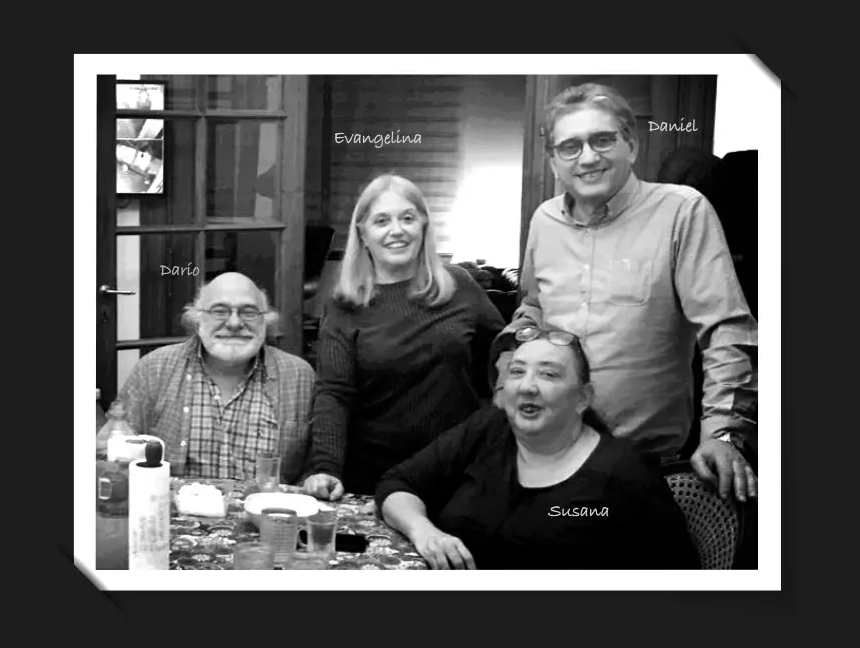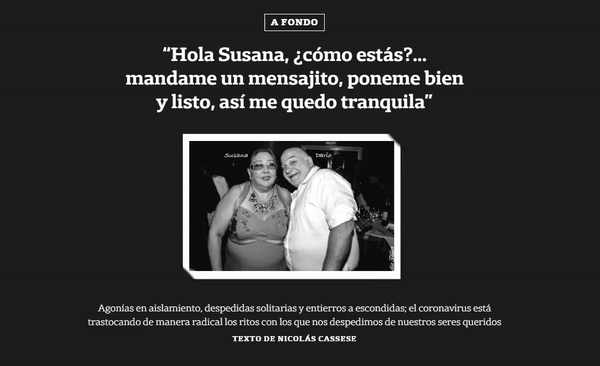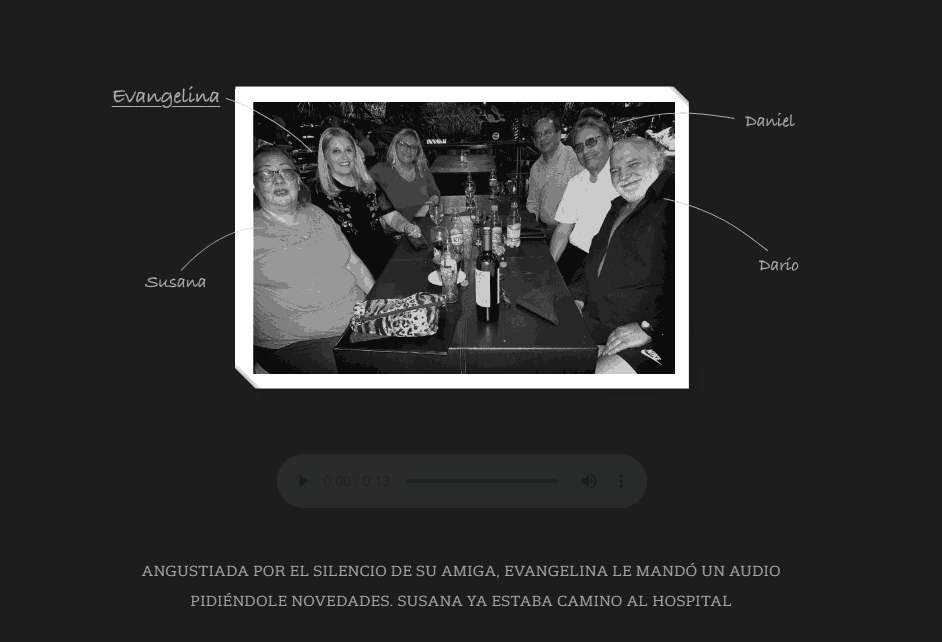1) CONTEXT
Coronavirus pandemic had a huge impact on the Argentine news schedule. In the first months we published hundreds of news stories on this subject, but we considered that we needed a fundamental approach: understand and tell people how the rituals of death were being modified. All those ideas of what it means to die well -accompanied by their loved ones and, as far as possible, in the intimacy of one’s home- were disrupted by the virus and its imposition of absolute isolation for the sick persons, even those terminally ill. Similarly, the cancellation of funeral wakes and burials altered the way we say goodbye to those who die.
The virus not only confined us to our homes, but it also deprived us of the basic rituals with which we have learned to detach ourselves from our friends and family centuries ago. Work aimed at settling that debt in our coverage.
2) DESCRIPTION
Firstly, we met with specialists: nurses, psychologists, physicians and officers who explained us which the new protocols were at the intensive care units, in the final hours and in funeral wakes and burials. They also talked about the complications of these restrictions for the victims. Then we spoke to relatives of the persons who had died of coronavirus and they told us about the traumas that the absence of goodbyes was causing to them.
After we gathered all this material, we understood that the story was significant, but it lacked the human warmth that creates that empathy with the reader. We needed to say that this was not a bureaucratic problem, that there were real people suffering deaths in isolation and flesh and blood relatives who lacked the possibility of saying goodbye. The problem was that coronavirus caused a sense of guilt: many relatives asked not to publish the name of their deceased relative, as if they were guilty of something.

After several attempts, we found the relatives of Susana Barredo y Darío Drajner, a couple who died due to coronavirus with 18 days of difference. We reconstructed her story through interviews with friends and family and obtained valuable material: the Whatsapp audio messages that Susana exchanged with her best friend during her convalescence. We understood that the importance of the story was in that exchange which showed the anguish of the woman, isolated in her own home, the little news received from her convalescent husband, the symptoms of coronavirus that she experienced.
With that material and the photos received, we wrote a story that combines images and audio to tell the story of the marriage and we included the information received from the specialists. The combination of text and audio generates a powerful effect that transmits the strength of the story.

3) STRATEGY AND IMPACT
After receiving the Whatsapp audio material, it was clear that this was the key of the story, but we faced an ethical dilemma: was it fair to publish the messages of a dead person? Where was the limit in those cases where news interest becomes something morbid? We discussed this matter within the team and considered that there was an evident news importance in those messages, but we talked with the relatives of the victims to explain our intention. We did not hurt them. We also talked to the friend who gave us the Whatsapp message exchange.

They all understood the purpose and encouraged us to go on with the story. They considered it a sort of tribute, the funeral wake that was not possible to do for Susana and Darío. After the story was published, they were satisfied and thankful, as they were the specialists we talked to.
As regards metrics, the story achieved 29.000 page views and 6,5 minutes of reading average.
4) TECHNOLOGY
Frontend was developed in Javascript using vue.js as main framework. As regards content, it was used an in-house development that uses Googledoc as platform for uploading interactive elements (text, photographs, videos, etc.) and Archie ML (an open source development of New York Times) as Markup Language.
5) Estimated number of persons working on the project
Six persons worked on this project.